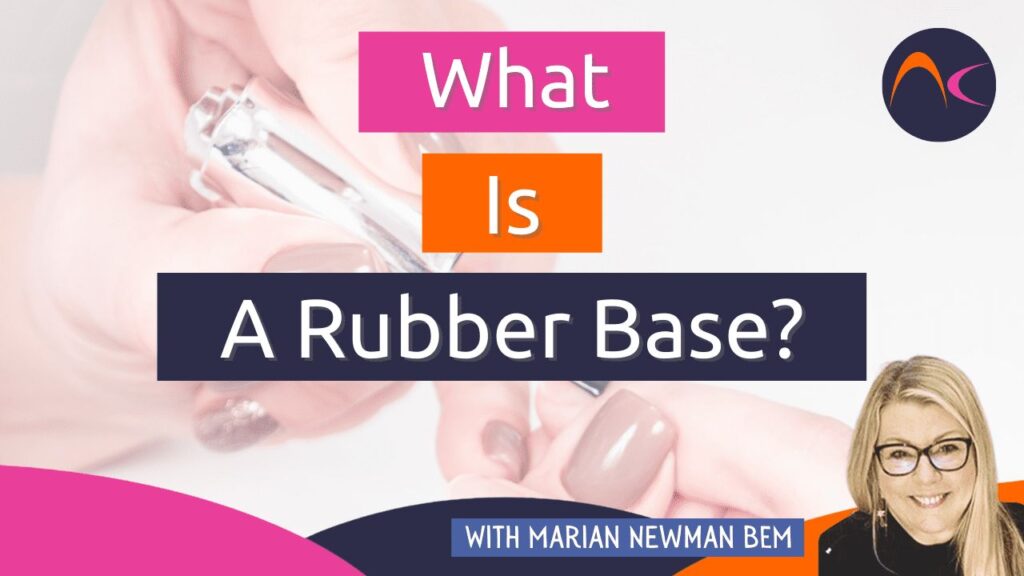I have recently written about ‘BIAB’ so nail pros have some understanding of what it actually is. Now I’m explaining a bit about the rubber base coat products that have become popular.
Do you know what you use them for? Do you know what they are meant to do? How do you know if you have a good one?
Well, first of all, they have nothing to do with rubber! This is just a marketing/descriptive term used for, what should be, a specific product.
A base coat of any kind is formulated to be the layer that adheres to both the nail plate AND the coating above. It is often in UV gel polish systems, and there are very few colour coats that have good adhesion properties (but there are some!)
The preparation of the nail plate is an essential step in any nail service, and should be done meticulously and very efficiently, without ANY damage to neither the nail plate nor the surrounding skin. If a system only needs minimal prep, then the base coat probably has high levels of adhesion monomers, which are far from acceptable in the health and safety of the service.
Many base coats have a very low viscosity, which is why they often have a shorter curing time. They are purely there to form a good bond between the natural substrate (the nail plate) and the ‘plastic’ coating. Those that have a higher viscosity often are formatted to do a specific job. This is where a ‘rubber base’ comes in.
Having a choice of base coats is a good plan as every client’s nails and lifestyle are different. What works for one may not work for another. This is where your professionalism and knowledge come in!
Although there is no actual connection to rubber, the description suggests a flexible coating that should work well with flexible, thin, damaged nails so there is not a more rigid coating trying to hold onto a moving nail plate.
So that is the best ‘use’! Not for all! There is no point in putting a flexible base on a strong nail plate. They may not even work for a dry nail plate as that can be quite rigid or brittle.
How do you know if you have a good one? (This information comes from Jim McConnell of McConnell Labs)
Try this experiment for yourselves.
– apply a coat of a ‘rubber base’ on a form
– cure for the recommended time (or double if you don’t have a matched UV lamp)
– remove the sticky layer
– peel the coating off the form
– does it bend and not snap? (It should bend)
– does it tear easily? (it shouldn’t)
– can it be stretched? (very few will stretch, but only very slightly)
This little experiment will be a good test and allow you to compare various brands.
Most brands will have good adhesion when the nail is properly prepped and is right for the individual! (One size does not fit all!)
This will help you to decide if your choice actually does what it promises.
Just keep in mind: why are you using it?
Does it fit your client’s nail condition or lifestyle?
Does it do what you expect it to do?
If you’ve ever experienced a burning sensation while using UV gels, you may be wondering if this is normal. Learn more about whether UV gels should burn like crazy in our Nail Knowledge Base article.


